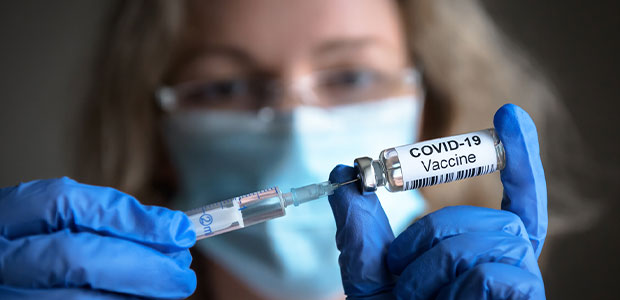
Understanding OSHA's Stance on the COVID-19 Vaccine
- By Devin Partida
- Oct 20, 2021
COVID-19 is still impacting communities and businesses around the world. With the delta variant outbreak presenting unprecedented challenges, it's unclear when the pandemic will be a thing of the past. Thankfully, new technologies are helping to fight the virus, and the ultimate goal is to reduce the spread until it subsides.
OSHA is responsible for ensuring safe and healthy working conditions across America. OSHA has been monitoring the ongoing pandemic, and many employers rely on the agency to ensure they're following guidelines and recommendations. The organization recently released recommendations and answers to frequently asked questions about the vaccine and how employers should proceed in the next few months.
Here is more about OSHA's stance on the vaccine and what employers should know about its guidelines:
OSHA's Stance on the COVID-19 Vaccine
Since the onset of the pandemic, many employers have had to rely on OSHA's recommendations regarding maintaining a safe and healthy workplace. OSHA emphasizes on its site that vaccination is "the most effective way to protect against severe illness or death from COVID-19." The organization encourages employers to offer paid time off to receive the vaccine and recover from any side effects.
How Employers Can Follow OSHA Guidelines
In April 2021, OSHA guided employers considering enforcing vaccination for all employees. While companies can require workers to get vaccinated as a condition of employment, OSHA suggests they consider several factors before issuing this type of requirement. OSHA has continuously updated its website to reflect CDC recommendations. There is tons of information on its website for employers that want to mitigate and prevent the virus' spread.
There are recommendations on how to protect unvaccinated workers or otherwise at-risk employees. There’s also new guidance on keeping vaccinated workers safe in areas of substantial or high transmission. Lastly, OSHA suggests that employers work with local health authorities to provide unvaccinated people with the chance to get their shots. It urges employers to either require vaccination or use safety measures like mask-wearing or social distancing. If a worker does not want to get vaccinated, he/she requires testing at least once a week.
Employers can take the guesswork out of deciding how to approach the subject of employee vaccination status. It's helpful for companies to review this information and stay updated on the latest news and adapt their policies to meet OSHA guidelines. Aside from basic safety information, OSHA recently released an Emergency Temporary Standard (ETS), which requires those working in health care and support services to get vaccinated.
It's important to note that this ETS only applies to the health care sector, so employers in other industries should rely on the guidance provided above. This ETS comes after a federal mandate from the Biden administration requiring health care workers on the frontlines to get vaccinated. The ETS can remain in place for six months, but eventually, OSHA will need to come forward with a more permanent standard.
Tips for Employers Looking to Remain OSHA Compliant
Below are some general COVID-19 vaccination tips that employers should use to remain compliant with OSHA and ensure their workplace is safe for all employees.
1. Facilitating employees getting vaccinated could mean providing access to the vaccine and allowing paid time off for employees to get vaccinated and manage any side effects.
2. Infected employees, unvaccinated workers exposed to the virus and anyone with COVID-19 symptoms should stay home from work.
3. Enforce social distancing efforts for unvaccinated employees or at-risk workers.
4. Provide all workers with facial coverings at work.
5. Educate employees on how to limit the spread of COVID-19 and train them on workplace policies and procedures.
6. Suggest that unvaccinated workers wear facial coverings in public-facing workplaces.
7. Follow CDC cleaning and sanitation recommendations.
8. Maintain ventilation systems and ensure they're working properly.
The COVID-19 pandemic has been a tumultuous time for everyone. Still, the last thing any employer wants is to have someone contract the virus and risk having to close down operations due to an outbreak.
Remain OSHA Compliant and Protect the Workplace
The pandemic continues to impact daily life and business operations. Therefore, employers must follow some of these suggestions from OSHA and the CDC to protect their workers.